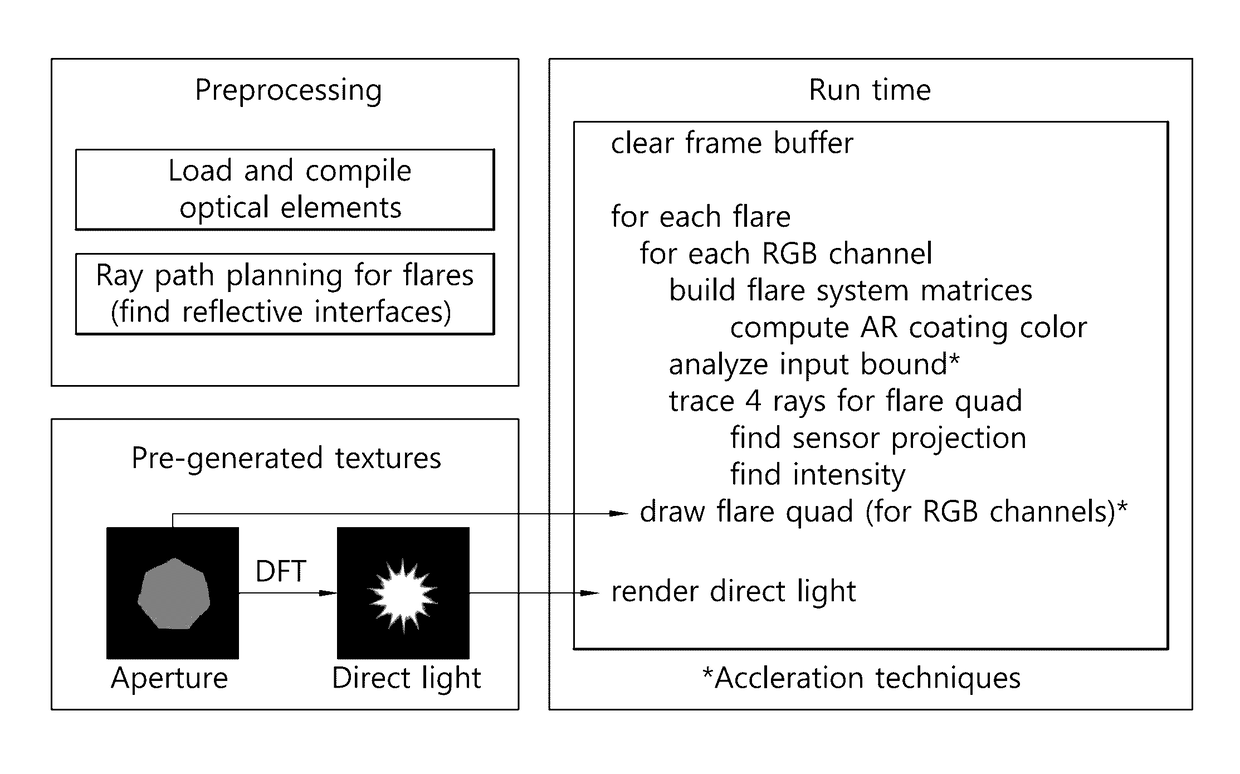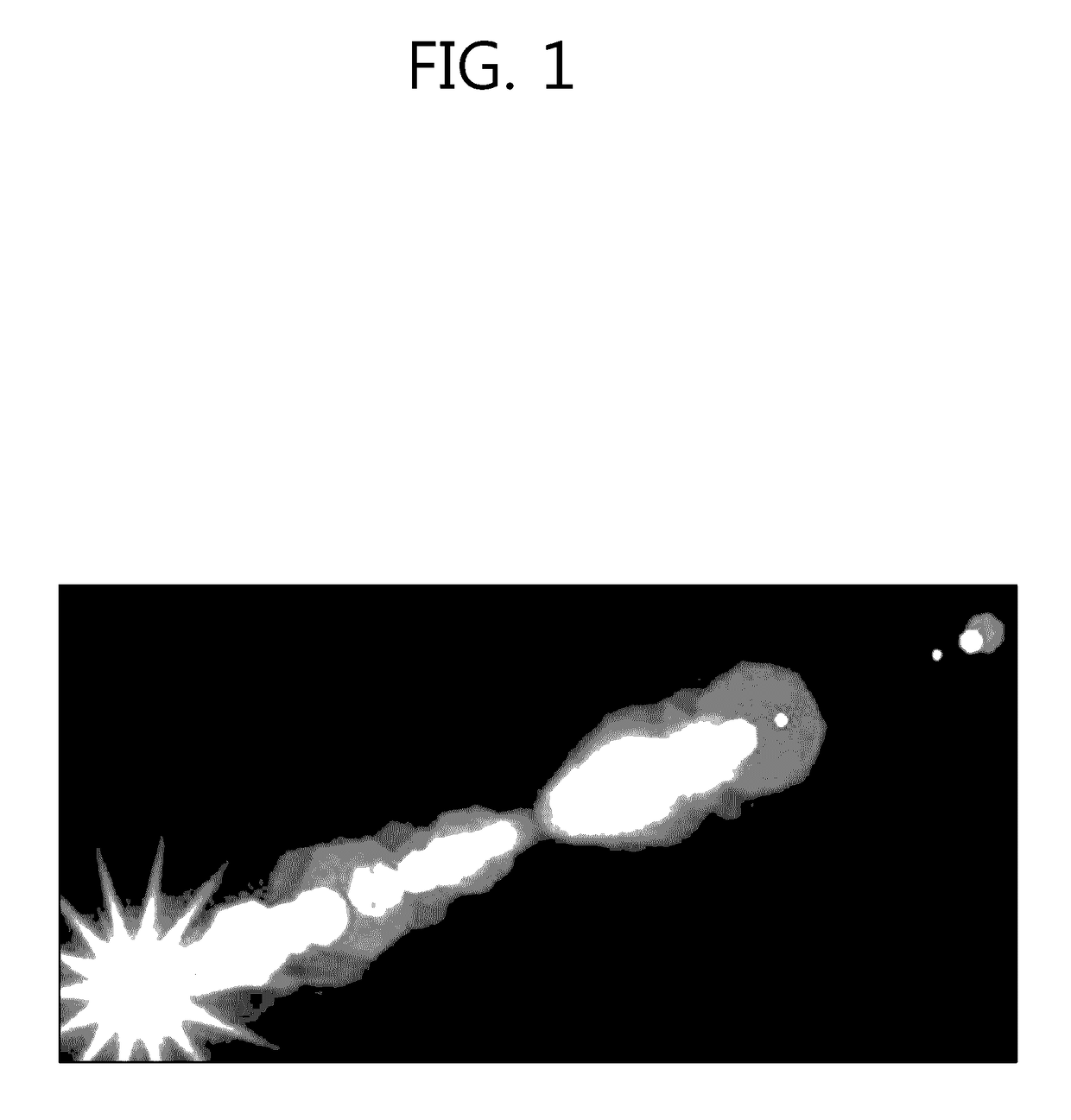Methods and apparatuses of lens flare rendering using linear paraxial approximation, and methods and apparatuses of lens flare rendering based on blending
a technology of linear paraxial approximation and lens flare, applied in image enhancement, texturing/coloring, image analysis, etc., can solve the problems of large computation load on a complicated optical system, difficult real-time use of methods, undesired patterns of sensors, etc., to achieve high speed, reduce speed, and speed up speed
- Summary
- Abstract
- Description
- Claims
- Application Information
AI Technical Summary
Benefits of technology
Problems solved by technology
Method used
Image
Examples
Embodiment Construction
[0074]Various modifications may be made to the present invention and the present invention may have a number of embodiments. Specific embodiments are described in detail with reference to the drawings. However, the present invention is not limited to specific embodiments, and it should be understood that the present invention includes all modifications, equivalents, or replacements that are included in the spirit and technical scope of the present invention.
[0075]The terms “first” and “second” may be used to describe various components, but the components are not limited thereto. These terms are used only to distinguish one component from another. For example, the first component may be also named the second component, and the second component may be similarly named the first component. The term “and / or” includes a combination of a plurality of related items as described herein or any one of the plurality of related items.
[0076]When a component is “connected” or “coupled” to another...
PUM
 Login to View More
Login to View More Abstract
Description
Claims
Application Information
 Login to View More
Login to View More - R&D
- Intellectual Property
- Life Sciences
- Materials
- Tech Scout
- Unparalleled Data Quality
- Higher Quality Content
- 60% Fewer Hallucinations
Browse by: Latest US Patents, China's latest patents, Technical Efficacy Thesaurus, Application Domain, Technology Topic, Popular Technical Reports.
© 2025 PatSnap. All rights reserved.Legal|Privacy policy|Modern Slavery Act Transparency Statement|Sitemap|About US| Contact US: help@patsnap.com



